
Fine Homebuilding Project Guides
Drywall
Trusted, comprehensive guidance for choosing, hanging, taping, sanding, and repairing drywall—the right way
Drywall (aka wallboard, gypsum board, or Sheetrock) is on more walls and ceilings than any other material in new construction. Yet many people are intimidated by the process of hanging, taping, and sanding drywall. Improperly attached or finished, drywall can be a real eyesore. But properly installed, this mundane material can add real beauty to any home or business. And it's a skill that's not that hard to master. In this comprehensive project guide, we'll show you how to do it right every step of the way, with techniques and materials used by the pros. The guide finishes with a bonus chapter on plaster techniques and repairs.
Choose a Chapter
Search Guide-
Drywall Basics
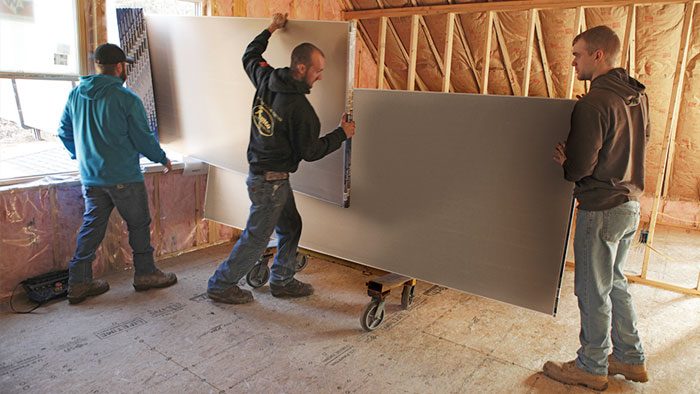
We're all familiar with the standard 4x8 panels that have been in use since drywall first became popular as a wall covering. But what about fire-resistant or mold/moisture-resistant drywall, lightweight panels, or VOC-absorbing drywall? Here, we'll sort through the wide variety of special-use drywall available, and also walk you through all the planning required before you hang that very first sheet.
-
Tools and Materials
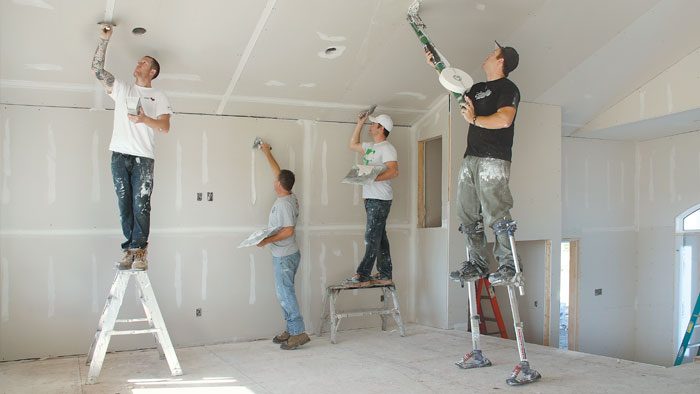
You can do a pretty good drywalling job with only the basic tools, but you’ll get much better results if you have the right materials and equipment. (Keep in mind that many tools can be rented at most rental equipment stores.) We'll introduce you to the latest developments in drywall tools, as well as guide you through the various types of fasteners, joint tapes, and joint compounds, including new ones that have been developed for specific uses.
-
Hanging Drywall
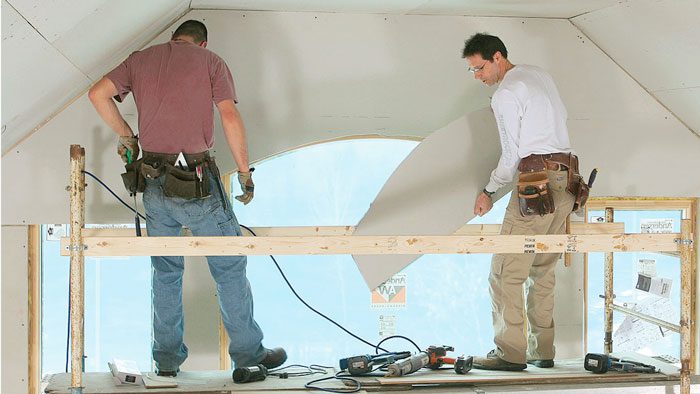
A good drywall hanging job provides the foundation for a quality taping job. In this section, we'll show you how to fit drywall panels snugly and keep joints to a minimum, accurately cut out holes for electrical boxes and other openings, and properly place and set drywall fasteners. Hanging drywall has the reputation of being a difficult, physically demanding job, but with the right attitude and the right techniques, it's not a part of the drywalling process that you need to approach with trepidation.
-
Taping and Sanding
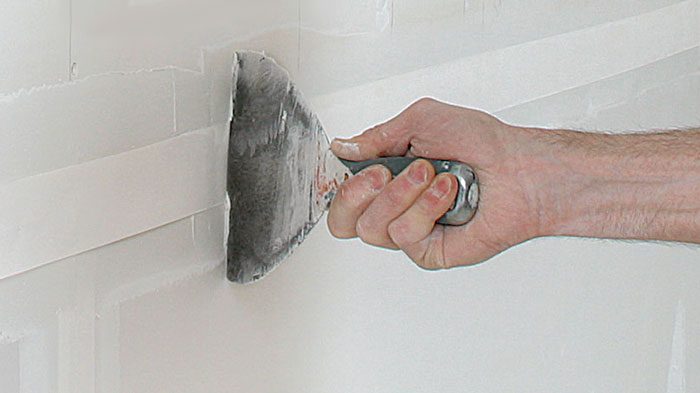
Taping over freshly hung drywall is a nice break after the hanging stage: It's fast-paced work that's not too physically demanding, and it's pretty much dust-free. Yet taping is also the part of the drywalling process that requires the most skill and the most patience. As you'll see in this section, there's more to taping than just concealing the joints between panels. A properly taped joint should be as strong and as durable as the drywall panel itself. Sanding is the final step in the drywalling process; it's dusty, tedious work, but a good sanding job is critical for a quality finish.
-
Special Installations
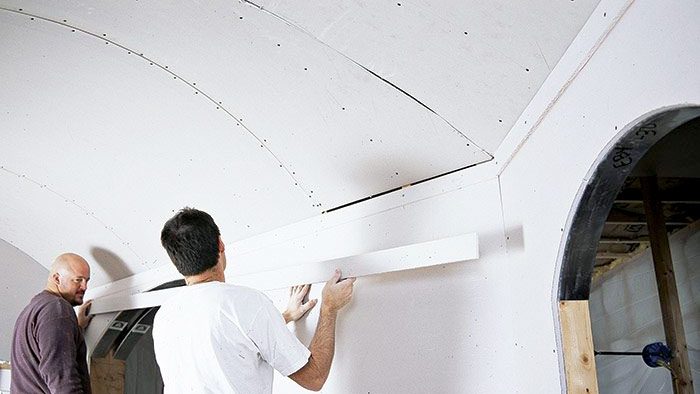
If all walls were straight and square with no butted seams and all corners were 90 degrees, drywalling would be a pretty mechanical and predictable job. But as anyone who is trying their hand at drywalling will soon find out, unusual seams, off-angle corners, and curved walls will present themselves sooner or later. Most of these special installations really aren't a lot harder than hanging drywall on a straight wall or ceiling, as long as you understand how to approach them and use the right techniques and materials.
-
Drywall Repairs
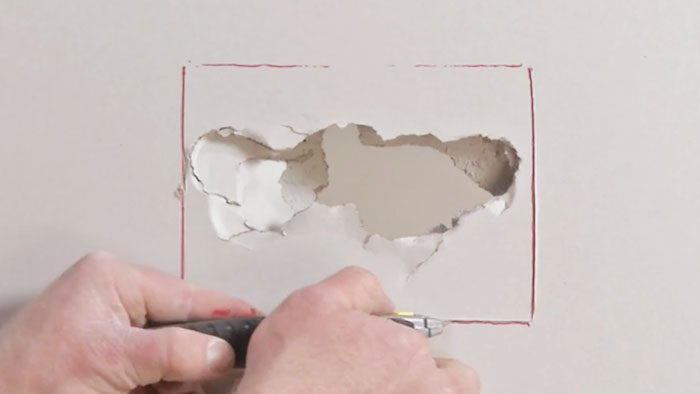
No matter how well you hang and tape drywall, there will inevitably come a time when you need to make some repairs–whether it be a ding from a doorknob or a hole from relocating an electrical outlet. Some repairs are simply necessitated by the demands of daily life in a busy home and can be done with a couple thin coats of joint compound. Others require removing and replacing pieces of drywall, and can take several passes of taping and sanding to make walls and ceilings look new again. You won't need any special equipment for repair work, as the tools and techniques are the same as those for standard taping jobs.
-
Plaster
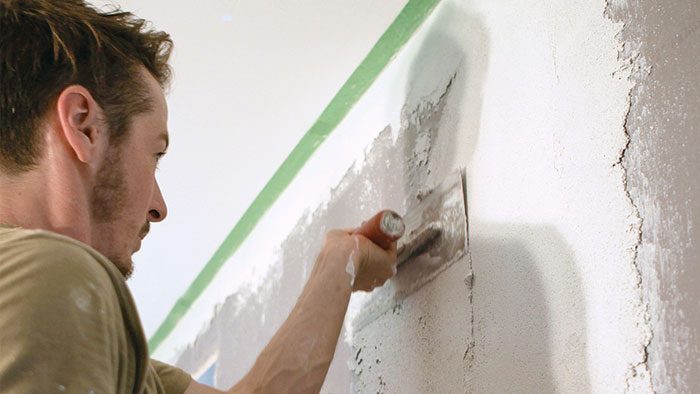
Drywall has largely replaced plaster as a surface finish for walls and ceilings, but hand-applied plaster is still widely admired for its texture and durability. In this final chapter of the guide, we'll show you how to apply lime plaster, which is a less laborious process than traditional plastering. We'll also look at the various ways to repair plaster, before wrapping things up with some classic plaster techniques.
- Home Group
- Antique Trader
- Arts & Crafts Homes
- Bank Note Reporter
- Cabin Life
- Cuisine at Home
- Fine Gardening
- Fine Woodworking
- Green Building Advisor
- Garden Gate
- Horticulture
- Keep Craft Alive
- Log Home Living
- Military Trader/Vehicles
- Numismatic News
- Numismaster
- Old Cars Weekly
- Old House Journal
- Period Homes
- Popular Woodworking
- Script
- ShopNotes
- Sports Collectors Digest
- Threads
- Timber Home Living
- Traditional Building
- Woodsmith
- World Coin News
- Writer's Digest




